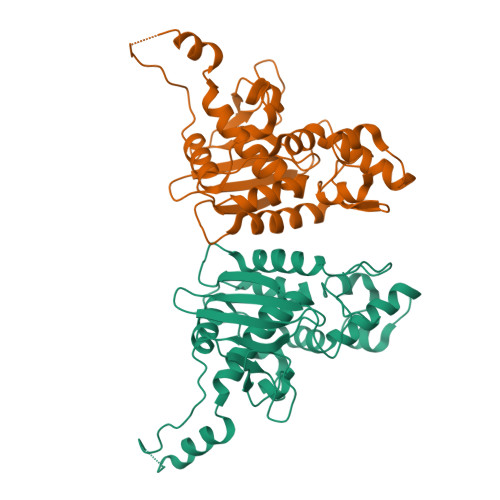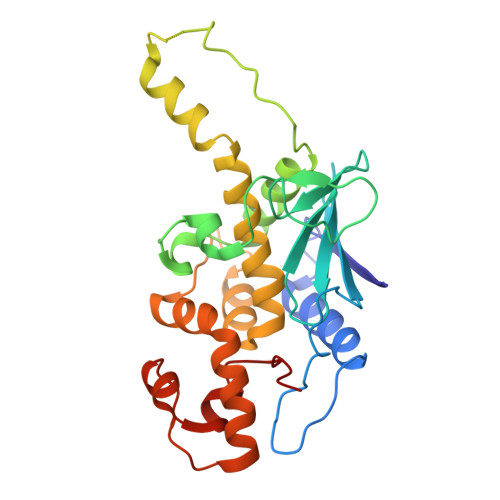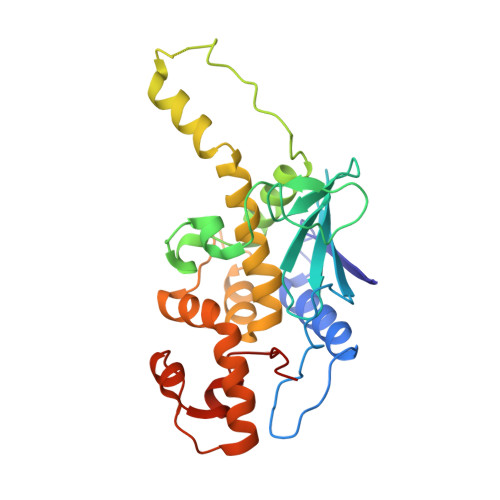Structure-function study of maize ribosome-inactivating protein: implications for the internal inactivation region and the sole glutamate in the active site.
Mak, A.N., Wong, Y.T., An, Y.J., Cha, S.S., Sze, K.H., Au, S.W., Wong, K.B., Shaw, P.C.(2007) Nucleic Acids Res 35: 6259-6267
- PubMed: 17855394
- DOI: https://doi.org/10.1093/nar/gkm687
- Primary Citation of Related Structures:
2PQG, 2PQI, 2PQJ - PubMed Abstract:
Maize ribosome-inactivating protein is classified as a class III or an atypical RNA N-glycosidase. It is synthesized as an inactive precursor with a 25-amino acid internal inactivation region, which is removed in the active form. As the first structural example of this class of proteins, crystals of the precursor and the active form were diffracted to 2.4 and 2.5 A, respectively. The two proteins are similar, with main chain root mean square deviation (RMSD) of 0.519. In the precursor, the inactivation region is found on the protein surface and consists of a flexible loop followed by a long alpha-helix. This region diminished both the interaction with ribosome and cytotoxicity, but not cellular uptake. Like bacterial ribosome-inactivating proteins, maize ribosome-inactivating protein does not have a back-up glutamate in the active site, which helps the protein to retain some activity if the catalytic glutamate is mutated. The structure reveals that the active site is too small to accommodate two glutamate residues. Our structure suggests that maize ribosome-inactivating protein may represent an intermediate product in the evolution of ribosome-inactivating proteins.
Organizational Affiliation:
Department of Biochemistry, Centre for Protein Science and Crystallography, The Chinese University of Hong Kong, Shatin, N.T., Hong Kong, China.

















